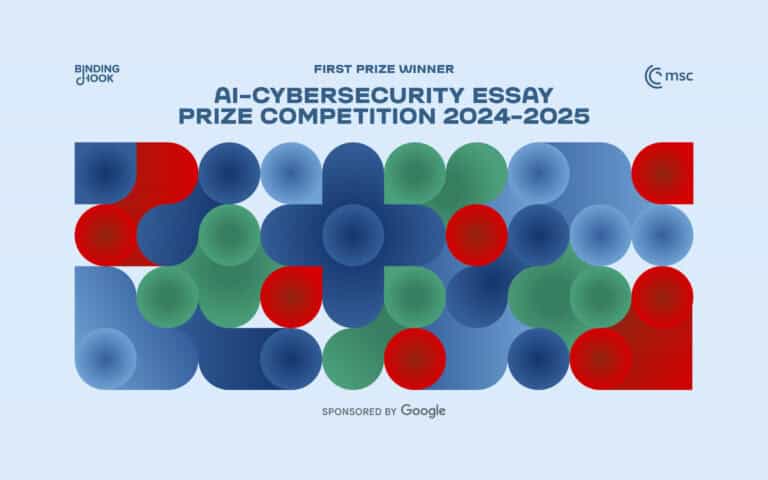Unpacking the vicious cycle of climate change and digital security

Climate change has a tangible and highly visible impact on the digital world through the damage it causes to the infrastructure underpinning technology. The internet is supported by a vast and diverse array of physical infrastructure, ranging from power stations and networking cables to internet exchange points and data centres. The physicality of this infrastructure makes it inherently vulnerable to the effects of climate change.
For example, extreme rainfall and rising sea levels drive increased flooding, presenting an operational risk for infrastructure like data centres and power generation components. They also threaten to flood subsea cable landing stations or disrupt seafloor integrity. Storms consistently damage key internet infrastructure: in 2012, Hurricane Sandy cut eleven out of twelve high-capacity transatlantic cables, while recent hurricanes in the US caused mobile network outages after cutting fibre optic cables and damaging cellular towers.
More intense and frequent wildfires exacerbated by global warming have similar effects, damaging fibre optic cables and cell towers. Ongoing heatwaves and droughts also threaten particularly energy-intensive components: two data centres suffered operational failure for several hours following a major UK heatwave in 2022. Redundancy in the system minimised the direct impact of this particular event, but more frequent and more intense heatwaves spanning the globe raise the spectre of simultaneous failures across data centre networks.
Data centres themselves exacerbate droughts and water supply issues, raising an interesting point: the relationship between climate change and digital infrastructure is not a one-way road. Just as climate change threatens digital infrastructure, our digital world and dependence on it is in itself a significant driver of climate change.
Resource consumption drives climate change
One of the major contributors to climate change is energy use and associated fossil fuel consumption. The digital world is a significant part of this: estimates vary but suggest the internet could use 20% of the global electricity supply and emit 5.5% of global carbon emissions by 2025. Some components, like data centres, are particularly energy hungry, and there are suspicions that energy consumption from this sector is even higher than we are led to believe.
Technosocial developments like the move to cloud computing and the development of AI have increased energy usage and subsequent emissions. AI – and generative AI in particular – requires around 33 times more energy to complete a task than standard software, while some sources suggest global cloud computing emissions exceed those generated by commercial aviation.
The internet is also a voracious consumer of other natural resources. The physical infrastructure underpinning both the internet and the devices we use to access it does not just appear out of nowhere. Much of the technology underpinning the internet – including end-user devices – is dependent on rare earth elements (REEs) like copper, lithium, or rarer metals like indium and tantalum.
This dependence makes REEs highly desirable and the subject of intense geopolitical competition. Our focus on technological progress could see a 10- to 20-fold increase in demand for REEs by 2050. Mining, extracting, and processing REEs cause ecological devastation and produce large amounts of toxic waste, in turn contributing to climate change.
Disposal of ‘e-waste’ is also a growing issue: much of the approximately 50,000 tonnes of e-waste produced globally each year is landfilled or incinerated, contributing to environmental pollution and greenhouse gas emissions.
Even our efforts to find more sustainable solutions or mitigate the vulnerability of digital infrastructure can create or exacerbate problems, inadvertently contributing to the vicious circle connecting climate change and digital risk.
For example, the use of satellites to connect to the internet seemingly counters the physical impact of climate change events (or the impact of human activity like conflict) and should ensure connectivity and continuity. However, satellite launches and re-entries damage the ozone layer.
Decreasing atmospheric density also extends the lifetime of space debris, threatening the physical integrity of satellites and demonstrating that the effects of climate change extend beyond just the surface of our planet.
Technosocial structures drive climate disinformation
There is a further argument to be made that our behaviour online and the technological structures that facilitate and shape our online interactions are additional contributors to the climate crisis.
Climate change has long been the subject of mis- and disinformation, but the onset of technosocial platforms of communication like social media, and their predisposition to encourage the spread of disinformation, have undoubtedly exacerbated this trend.
Politically motivated actors are also increasingly leveraging climate change to achieve political outcomes. This is evidenced by the recent use of the 2025 Los Angeles wildfires to denigrate diversity and equality programmes and climate science deniers campaigning against environmental policies. Disinformation encourages people and decisionmakers to downplay the severity of climate change and its future impacts, with some even coming to the extreme view that climate change is not real.
These viewpoints and the politicisation of climate change not only drive global lethargy on devising and enacting collaborative and impactful climate action, but also contribute to the election of leaders seeking to enact actively harmful climate policies, further adding to the urgency and severity of the wider issue.
Disrupting the cycle
Efforts to mitigate the impact of climate-induced events like bolstering resilience, introducing redundancy, and ensuring suitable alternatives if one component fails, will provide short-term protection to the digital ecosystem and its supporting infrastructure. However, they will fail to fundamentally disrupt the continually reinforcing cycle between the digital world and climate change.
As the climate crisis worsens and the current political climate adds even more complexity to the operating environment, communities instead need to better understand this relationship and take a more future-looking approach.
Potential courses of action include accelerating the slow shift towards renewable energy sources and diversifying these sources to protect against issues like drought or unpredictable weather.
Economic incentives already push companies to improve the efficiency of components like data centres, and promising initiatives have started to use excess heat from data centres to warm homes or water supplies. These localised projects could be adapted and promoted across companies and local governments.
Developments like universal ports, legislation protecting right-to-repair, and lawsuits against tech companies throttling devices to promote new purchases are positive developments in combatting ‘throwaway’ culture and tackling e-waste, even if their effects may be geographically limited.
Final thoughts
Climate change presents an existential and long-term threat to the future of the digital world and the human industries, activities, and connections ultimately dependent on it. As well as threatening the integrity of physical internet infrastructure, the interactive and self-reinforcing nature of the relationship between climate change and the digital world adds a layer of complexity to an existential issue.
Solutions need to focus not just on building short-term resilience but also on enacting policies and practices to actively disrupt this feedback loop, protecting both the digital and natural worlds upon which we depend.




